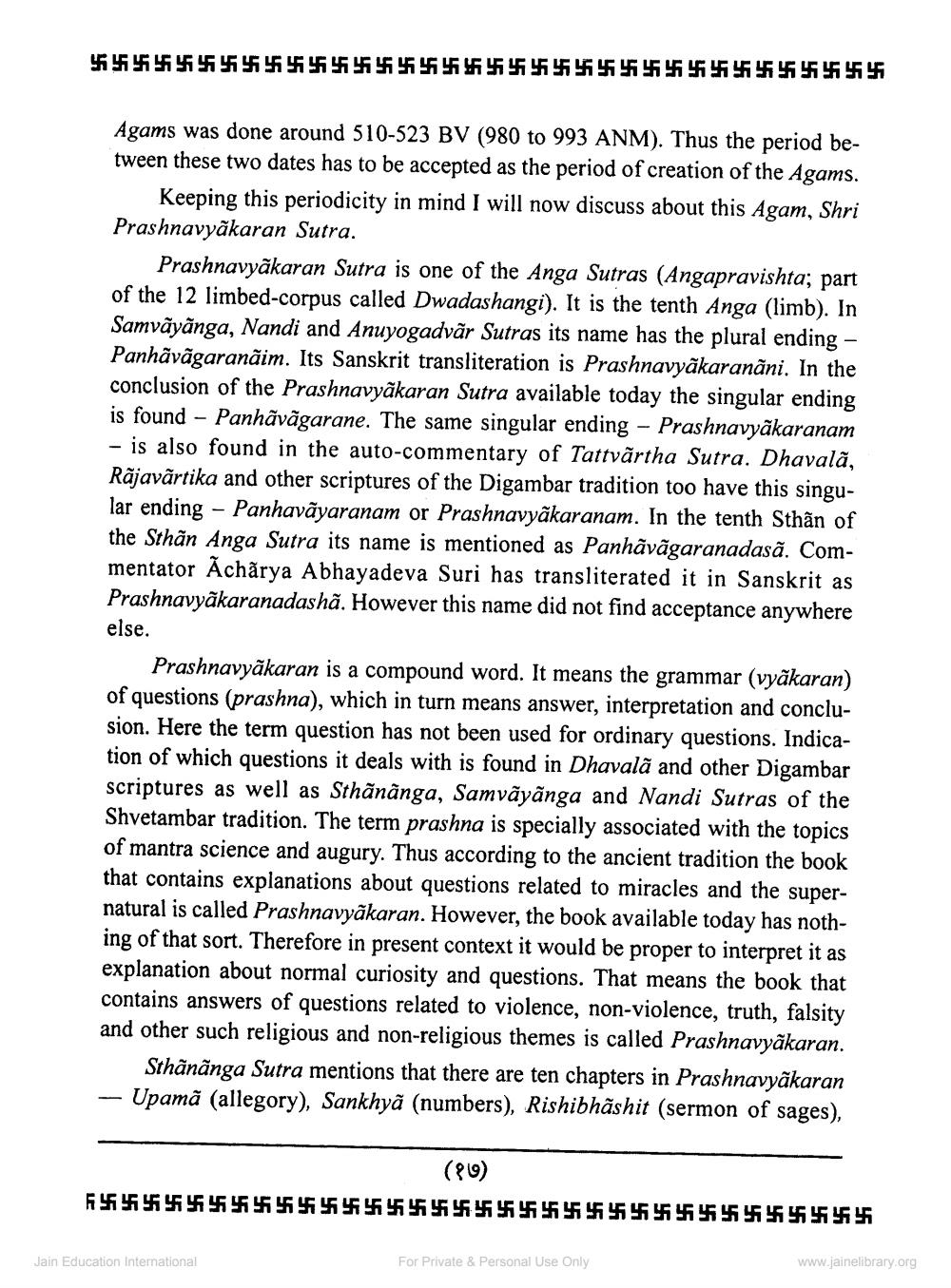________________
55555555555555555555
Agams was done around 510-523 BV (980 to 993 ANM). Thus the period between these two dates has to be accepted as the period of creation of the Agams.
Keeping this periodicity in mind I will now discuss about this Agam, Shri Prashnavyakaran Sutra.
Prashnavyakaran Sutra is one of the Anga Sutras (Angapravishta; part of the 12 limbed-corpus called Dwadashangi). It is the tenth Anga (limb). In Samvayanga, Nandi and Anuyogadvar Sutras its name has the plural ending - Panhãvägaranãim. Its Sanskrit transliteration is Prashnavyakaranani. In the conclusion of the Prashnavyakaran Sutra available today the singular ending is found - Panhãvägarane. The same singular ending - Prashnavyakaranam - is also found in the auto-commentary of Tattvartha Sutra. Dhavalã, Rajavartika and other scriptures of the Digambar tradition too have this singular ending - Panhavayaranam or Prashnavyakaranam. In the tenth Sthan of the Sthan Anga Sutra its name is mentioned as Panhãvägaranadasă. Commentator Acharya Abhayadeva Suri has transliterated it in Sanskrit as Prashnavyakaranadashã. However this name did not find acceptance anywhere
else.
Prashnavyakaran is a compound word. It means the grammar (vyakaran) of questions (prashna), which in turn means answer, interpretation and conclusion. Here the term question has not been used for ordinary questions. Indication of which questions it deals with is found in Dhavalã and other Digambar scriptures as well as Sthanãnga, Samvayanga and Nandi Sutras of the Shvetambar tradition. The term prashna is specially associated with the topics of mantra science and augury. Thus according to the ancient tradition the book that contains explanations about questions related to miracles and the supernatural is called Prashnavyakaran. However, the book available today has nothing of that sort. Therefore in present context it would be proper to interpret it as explanation about normal curiosity and questions. That means the book that contains answers of questions related to violence, non-violence, truth, falsity and other such religious and non-religious themes is called Prashnavyakaran.
Sthãnãnga Sutra mentions that there are ten chapters in Prashnavyakaran Upama (allegory), Sankhya (numbers), Rishibhashit (sermon of sages),
(१७)
6555555555555555555555555555555555
Jain Education International
For Private & Personal Use Only
www.jainelibrary.org




